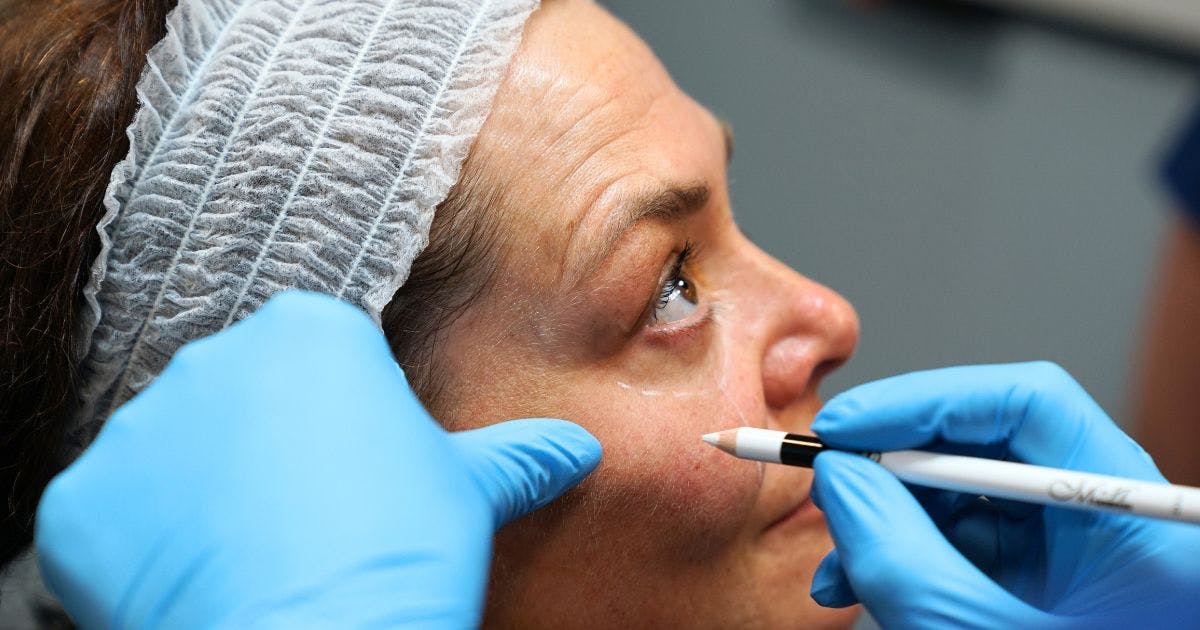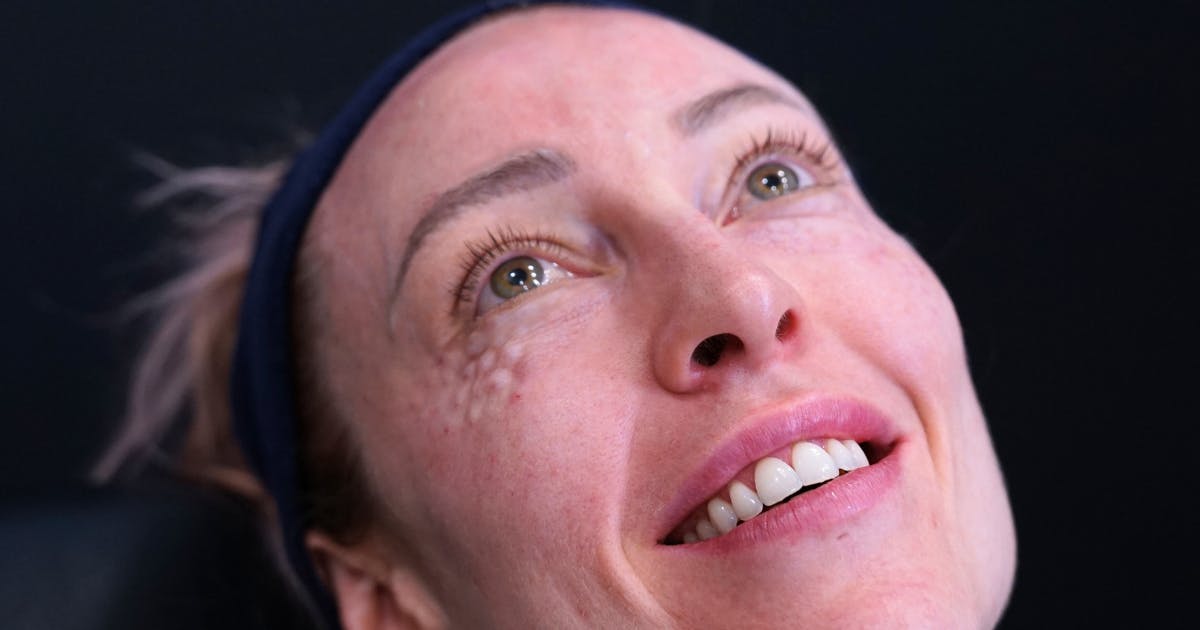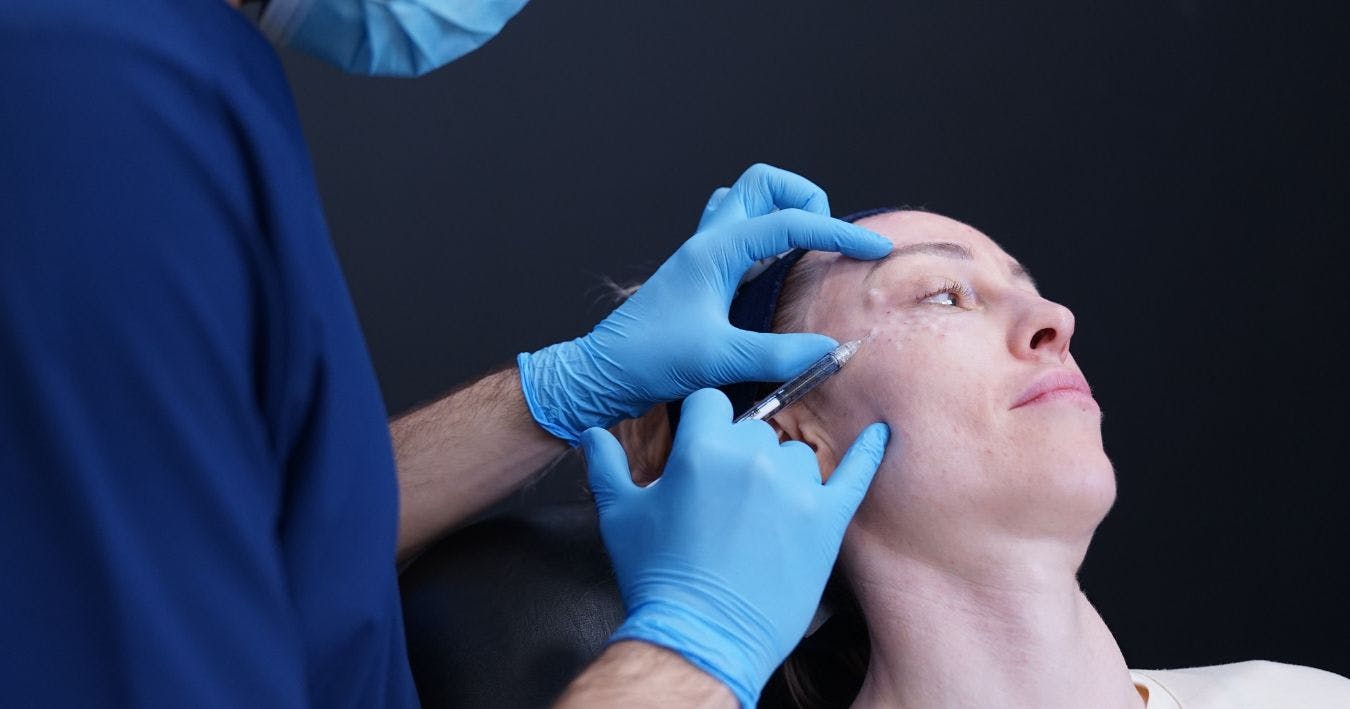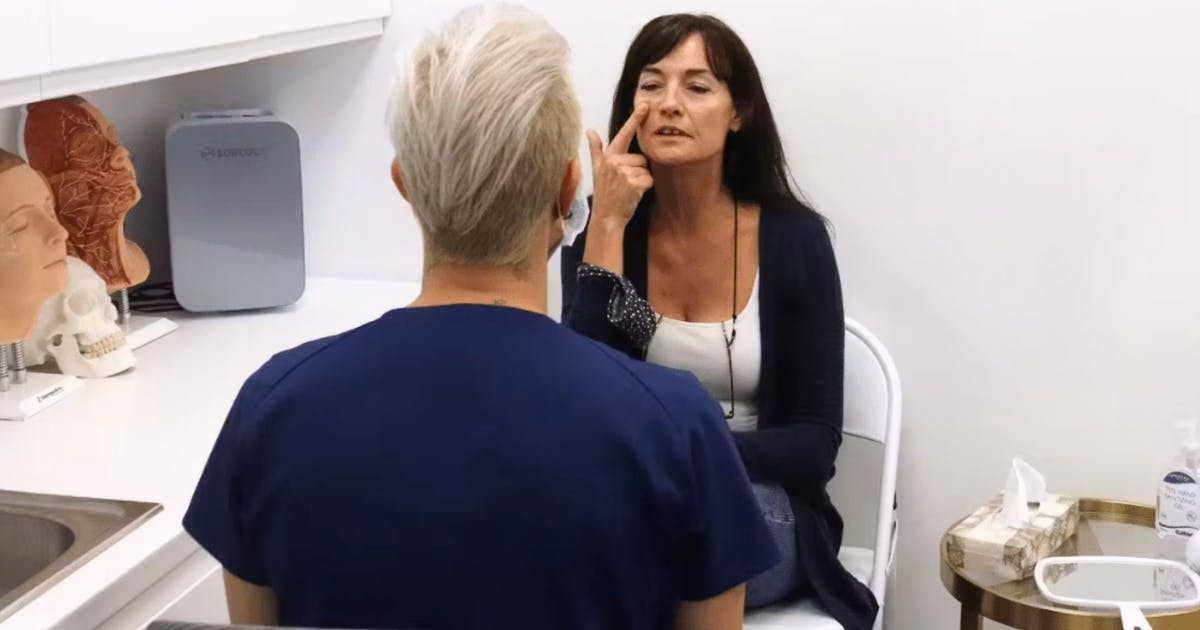When to Use Tear Trough Filler Versus Polynucleotides

Do you know when to use tear trough filler versus polynucleotides when addressing under eye concerns?
Since polynucleotides burst onto the aesthetics scene, patients are increasingly asking for this injectable treatment for the periorbital region. Some see this skin booster as an alternative to tear trough fillers.
But is that really the case? And in which instances would they be better off opting for tear trough filler, or even both treatments? Let us fill you in!
We interviewed Dr Lindsay Jones, a Harley Academy clinical trainer and aesthetic medicine specialist, to get all the details…

What's the difference between tear trough filler and polynucleotides?
“Tear trough filler and polynucleotides are two popular treatments requested by patients. However, they’re very different in their mode of action and their anatomical target,” shares Dr Lindsay.
“The filler used in the periorbital region is usually hyaluronic acid-based and is designed to replace lost volume in the under eye area.
“Polynucleotides are short chains of DNA designed to turn on certain functions in dermal fibroblast cells that result in increased hydration, collagen and elastin production, pigment regulation and angiogenesis.”
Who is suitable for tear trough filler? What makes a good candidate?
“Due to the amount of water that hyaluronic acid fillers attract, their use in the under eye area needs to be sparing. Tear trough filler should only be provided for appropriate candidates,” insists Dr Lindsay.
Good tear trough filler candidates
“The ideal tear trough filler patient has good skin quality and simple hollowing along the inferior orbital rim limited medially,” she states.
Poor tear trough filler candidates
“Patients with excess skin, poor skin quality, deep fat herniation through the orbicularis oculi, and fluid retention around the eye are all poor candidates for tear trough filler,” she confirms.
Adding, “Patients often think that this procedure is going to fix dark circles under the eye, but it won't achieve this in the vast majority of cases.”
Tear trough filler training course
You’ll learn how to identify the relevant indications for treatment as part of our Tear Trough Filler Masterclass. This is a highly-targeted session where you immerse yourself in the theory and practise of under eye filler treatments.
With 3 hours of pre-course eLearning and a full day of practical learning, you’ll inject your own patients - provided by us - under one-to-one mentorship. Our friendly and knowledgeable clinical trainers will provide specialist insights throughout and help you to really nail your techniques!
Upon completion of your practical tear trough training, you’ll receive a certificate and leave inspired to reproduce the results you’ve achieved for your patients.

What makes a good candidate for polynucleotides under the eyes?
“Patients who would benefit from polynucleotides are those whose primary under eye issue is the quality of their skin. This could manifest as crepey skin, fine lines, wrinkles, pigmentation, dehydration and loss of elasticity,” lists Dr Lindsay.
“Polynucleotides can be used to improve the skin quality prior to tear trough filler. However in extreme cases often surgery is the best option,” she notes.
Polynucleotides Training Course at Harley Academy
One of the latest aesthetic courses to be introduced to the Harley Academy roster is our Polynucleotides Training Course.
From product science and applications, to injection techniques and aftercare, you’ll leave feeling confident in these new collagen stimulators!
You can complete the 2 hours of eLearning remotely, then attend our City of London flagship campus, Harley Academy Threadneedle Street, for a full practical day.
You’ll treat full-face and under eye indications, refining your polynucleotide injection technique under one-to-one specialist guidance, ready to introduce this popular treatment to your practice.
How do you consult patients interested in under eye injectable treatments?
“The under eye is a very challenging area to treat non-surgically, so patients' expectations need to be managed appropriately. Firstly they need a full consultation to elicit their main concerns about their under eyes, as well as any contraindications such as allergy to fish,” reminds Dr Lindsay.
Polynucleotides are fish-derived substances so it’s crucial to inform your patient of this. In addition to potential allergy issues, your patients may have other concerns, such as being vegan.
Dr Lindsay continues, “The undereye area needs to be examined objectively to see what the main issues are. You’re also checking for any of the aforementioned treatment contraindications. Budget will also need to be discussed as often more than one treatment or treatment modality will be required to achieve results.”
As polynucleotides are a collagen stimulating therapy, the results may take a few months to really peak. This is due to the body’s natural collagen production timeline and is something patients should be made aware of. They should certainly not be seen as a ‘quick fix’.

What are the benefits of tear trough filler versus polynucleotides?
Tear trough filler is used to address under eye hollowing by replacing lost volume. Polynucleotide injections are used to reduce the appearance of fine lines and to improve skin quality, including laxity, in the periorbital region. They can also be used all over as a full-face treatment.
Regarding the benefits of each, Dr Lindsay advises, “In the right patient, tear trough filler can help to disguise hollowing under the eye and give a rejuvenated appearance. Patients will often report looking ‘less tired’.
“The benefits of polynucleotides are that they improve skin quality in a challenging area to treat with other modalities. These include chemical peels, microneedling and lasers.”
Not only can polynucleotides be used under the eyes, they can also be injected into the eyelids to help with crepiness.
Can a patient benefit from both tear trough fillers and polynucleotide injections?
“Absolutely!” enthuses Dr Lindsay.
“If a patient has moderate skin quality and hollowing suitable for treatment with filler, then both would be recommended as part of their treatment plan. A course of polynucleotides prior to filler can be a game-changer for patients who may otherwise not be a great candidate for tear trough filler initially.”
What other options are there for tackling patients’ periorbital concerns?
Whilst it’s easy to assume that anyone worried about their under eyes is concerned about hollowing or fine lines, that’s not always the case.
There are many common presentations that patients seek cosmetic interventions for, including…
- Eye bags (oedema)
- Dark circles
- Crow’s feet.
Eye bags will generally require surgery
Periorbital puffiness or skin laxity resulting in “eye bags” generally requires surgery known as blepharoplasty.
Soft tissue fillers are unsuitable in these instances as they’ll only add to the puffiness, especially where this is caused by fluid retention.
Where skin laxity is the main factor, depending on the severity, a course of polynucleotides may be advisable.
You may, however, wish to refer these cases on to an ophthalmic surgeon or oculo-plastic surgeon.
Various treatment options for dark circles depending on the cause
Dark circles can be the result of a number of factors, including shadowing, lifestyle, hyperpigmentation and genetics. It’s a common concern for your patients.
Shadowing
This is a product of how light interacts with the topographical surface of the region. If the area under the eye is concave, it can look dark, compared to more convex areas where the light hits first.
If the concavity is due to infraorbital volume deficit from bone or fat resorption with age, fillers can help this appearance by supporting the skin surface. Milder improvements can also be achieved by addressing skin laxity with polynucleotides.
Vasculature
It is worthwhile noting that as skin quality deteriorates under the eye and becomes thinner, vessels lying in the area may become more visible. This can contribute to dark circles. Polynucleotide treatments may be able to regenerate the skin to mildly improve the appearance.
Hyperpigmentation
Where hyperpigmentation is the reason for dark circles, there are various topical remedies that can be considered. Remember the skin is thin and potentially sensitive in this area.
Firstly, we’d advise talking to your patient about low strength retinol and potentially also introducing a vitamin C product to their skincare routine. Not all retinol products are suitable for the delicate periorbital region so it’s important to explain your precise recommendations.
Lifestyle
Smoking, sleep deprivation, stress, dehydration and poor nutrition are just some of the lifestyle elements that are suggested to result in dark circles. Excessive sun exposure can also contribute to poorer skin quality around the eyes. This is partly because the skin is thin here in the first place.
These are all aspects that should be considered during your consultation for a holistic approach. You can remind your patients that failing to address these types of issues may negatively affect the results of any treatments they choose to invest in.
Do recommend the use of sunscreen for the skin under the eye, which is often neglected on face application.
Learning a holistic approach to under eye concerns
Our Cosmetic Dermatology Course teaches you how to tailor skincare regimes for your patients. You’ll learn about ingredients rather than brands, so you can create bespoke routines that will help your patients to address their concerns at home, as well as in-clinic.
There’s also an entire module on treating hyperpigmentation and skin of colour, which can be incredibly useful in these instances.
This course is available as a standalone or as part of our Combined Level 7 where it’s completed in addition to our Ofqual-regulated, respected, postgraduate level injectable qualification, the Level 7 Diploma in Botox & Dermal Fillers.
This holistic approach is a fantastic way to build trust and regular income as skincare products and services tend to require more regular contact than injectables. Great skin can also bring in fantastic patient referrals!

Genetics
Deeper pigmentation under the eyes can be caused by genetics. This is particularly prevalent in communities of colour, especially those of South Asian descent.
There is little that can be done for inherited pigmentation issues, however, following the advice provided above for hyperpigmentation may provide some improvements.
Polynucleotides for brightening dark circles under the eyes
There is rationale to support the use of polynucleotides for brightening dark circles under the eyes. Some evidence suggests that polynucleotides may inhibit melanin synthesis.
However, do note that dark circles are multifactorial, so those resulting from hyperpigmentation are more likely to benefit from this approach.
Crow’s feet can be treated with toxin
Periorbital lines and wrinkles, commonly known as Crow’s feet, are straightforward to treat with botulinum toxin. You can find out more about this in our previous article on Periorbital Botox: How to Treat Crow’s Feet.
Apart from managing lines, treating this area also opens up the eye to give a ‘less tired’ visual impression.
Further reading and course assistance
If this article has inspired you, you may wish to delve into our back catalogue of articles regarding tear trough filler.
To learn more about administering tear trough filler directly, check out Tear Trough Filler: Treating the Under Eye Area.
Meanwhile, if you’d like to learn more about indirect treatment of under eye hollowing via the cheek, there’s an article on that, too!
Happy reading! We hope this information has been helpful and, remember, if you’d like more information on our Tear Trough Fillers Masterclass or Polynucleotides Training Course, our Course Advisors are always on hand to answer any of your questions.
All information correct at the time of publication
Download our full prospectus
Browse all our injectables, dermal fillers and cosmetic dermatology courses in one document
By submitting this form, you agree to receive marketing about our products, events, promotions and exclusive content. Consent is not a condition of purchase, and no purchase is necessary. Message frequency varies. View our Privacy Policy and Terms & Conditions
Attend our FREE open evening
If you're not sure which course is right for you, let us help
Join us online or in-person at our free open evening to learn more
Our Partners














STAY INFORMED
Sign up to receive industry news, careers advice, special offers and information on Harley Academy courses and services


